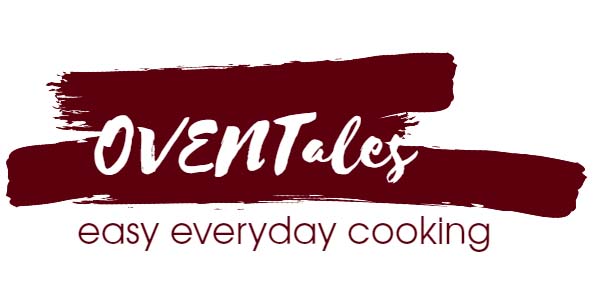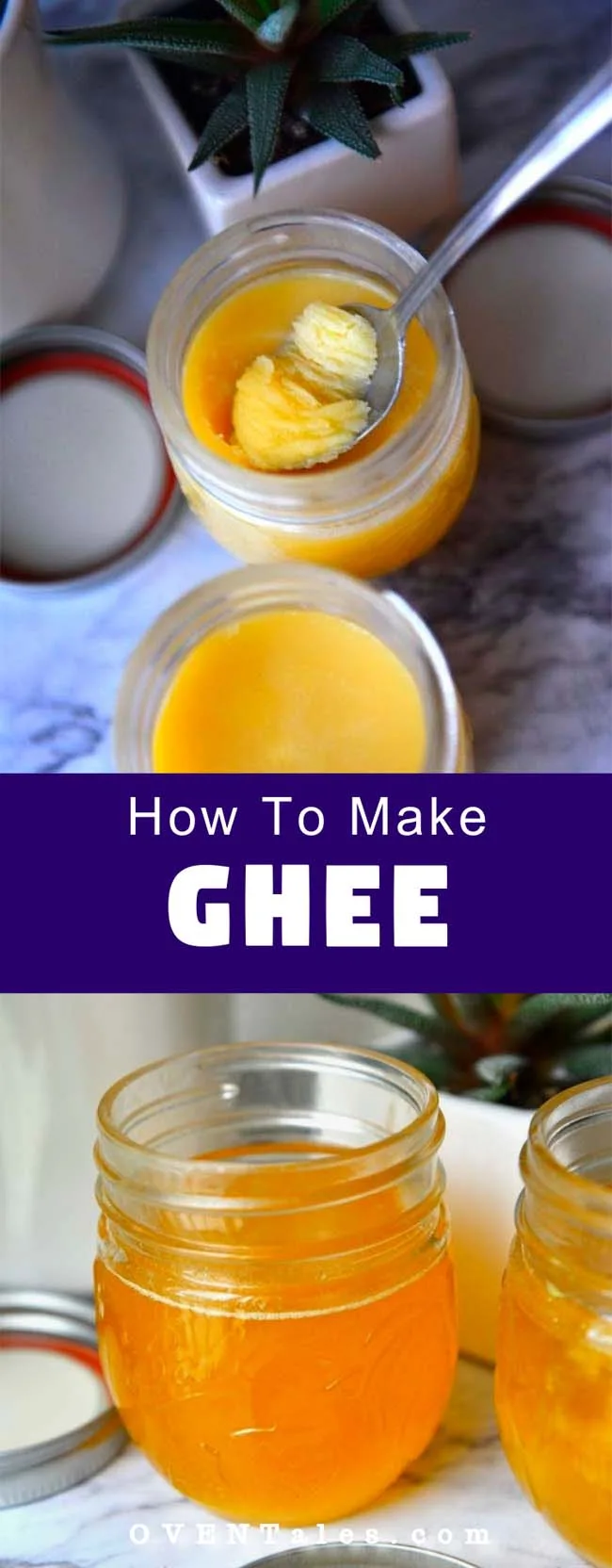Ghee is clarified butter, popular in the Indian subcontinent and many middle eastern nations. It has a unique flavor, high smoking point and is attributed to have many health benefits and nutitinal values compared to other fats.
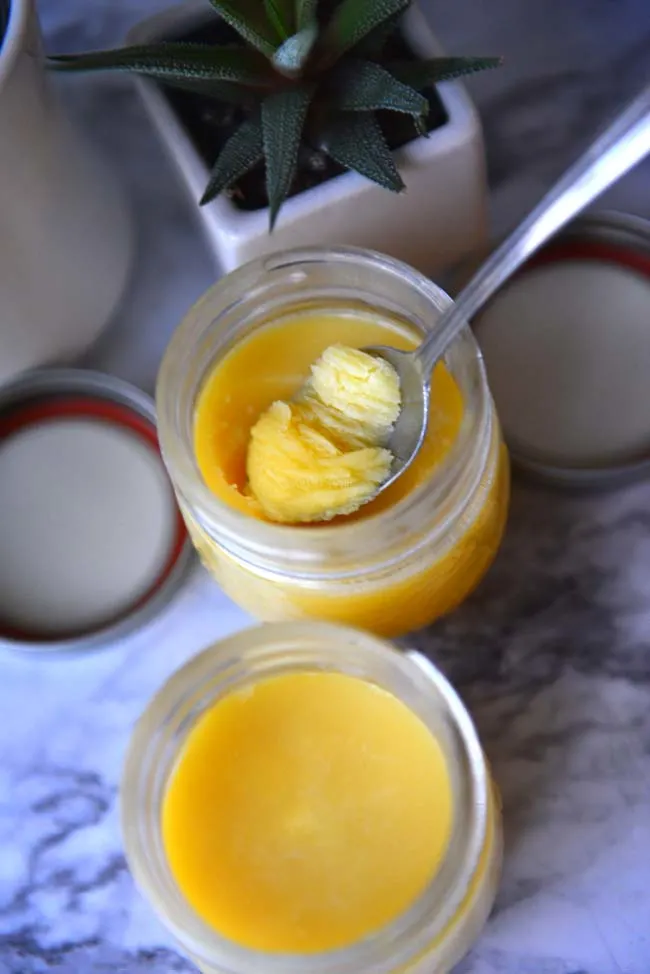
Ghee has been used by the cooks in the Indian subcontinent for ages. This golden fat can be found in desserts to curries to medicinal preparations. It is allergen free, easy to make at home and stays fresh without refrigeration even in the hot and humid tropics. There was always a bottle in mom’s kitchen and it was this that transformed the plain dosa into the coveted ghee roast .
What is ghee ?
Ghee is a version of clarified butter with the water cooked out as well as the milk solids. This makes ghee pure fat – devoid of casein and lactose the common milk allergens. Unless the weather is warm it solidifies in room temperature similar to virgin coconut oil.
Benefits of ghee
Ghee is believed to help with absorption of nutrients. In Ayurveda, the most predominant alternative medicine system in India it is used as the medium to deliver many medicines. It is pure fat , but most of it is beneficial fat. One of them is CLA , a type of fatty acid with a long list of health benefits, another one is butyric acid. Ghee helps with the absorption of fat soluble vitamins like Vit A , E and K – all essential in maintaining healthy bones, skin and eyes.
It is even credited to aid weight loss and detoxification. When used in moderation, the benefit definitely tend to outweigh the calorie intake.
How to make ghee ?
Making ghee is one of the simplest things you can do. Keep the butter on low heat when you are doing other things in the kitchen . Every few minutes check on it to see how it is progressing. As the butter fat solidifies give an occasional stir and listen to the way it bubbles. It is the water cooking out. Finally the sound of bubbling changes and you see clear bubbles – that is the cue . Take off the heat and strain . That is it !
A word on butter/s
Traditionally ghee in India was made from cow’s butter. Though you can make it with butter from other bovines or even sheep or goat milk. There are slight flavor variations for each , just like cheeses.
Traditionally ghee was made from cultured butter. Cultured butter used is churned out of full fat yogurt. The yogurt will be home made, which in turn used to be non homogenized. This yogurt will separate into butter and lite butter milk upon churning.
Cultured butters are available in stores in the US, but these are usually made with cream to which bacteria (the culture) is introduced. Cultures of health has a good article on this. If you can’t find it don’t worry, ghee can be as easily made with regular butter.
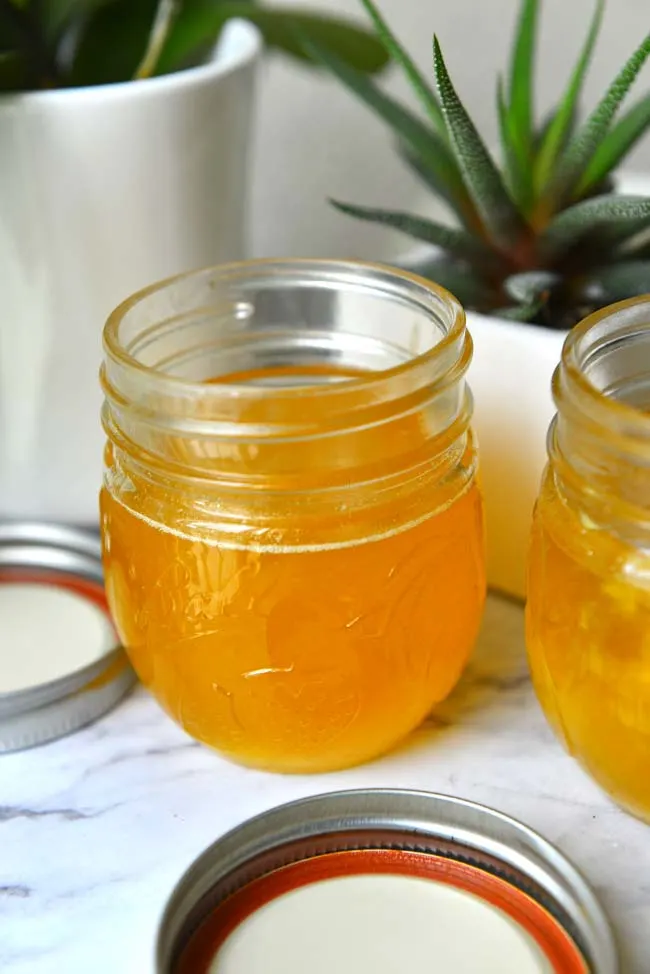
The case for making ghee this at home ?
A medium bottle of ghee could set you back about $20 if it is made from organic , grass fed cows (the way it was meant to be ). About half that amount if it is made from regular milk. Making it at home is much more economical, even better if you can make butter at home .. More on that another time.
Here is the other reason why I like making it at home. It is kind of a natural perfume – so to speak. It makes the kitchen smell warm and often tricks my kids into thinking that I am baking cookies ? .
What would you choose , butter or ghee on the toast ?
Here are a few pictures of the different stages as the butter melts and transforms into ghee ..
Note : If you are starting with cream take the butter out of it by using the whipping attachment in the mixer. Whip more after the cream has reached full volume and it will separate out into whey and butter. You could heat the cream directly , but that is a much longer process as there is more water and solids to cook out.
Heat the butter at low till it melts . At the stage the heat could be a little higher if you are keeping an eye on it and be ready to stir.
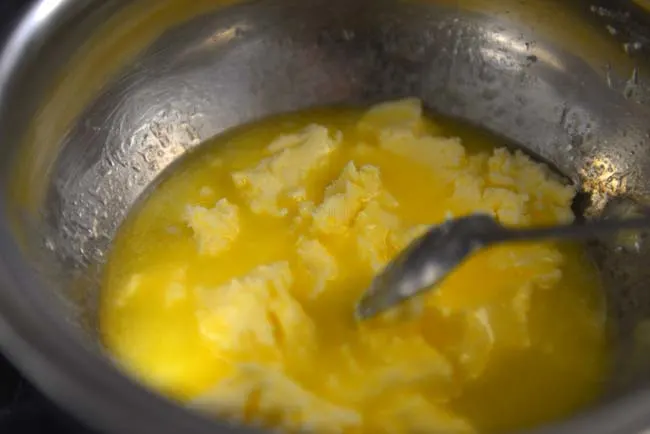
Once the butter is melted it is safer to keep the heat on low to prevent any of the butterfat from sticking to sides and burning. As it cooks you will see the milk solids separate and froth up as well as stick to the sides.
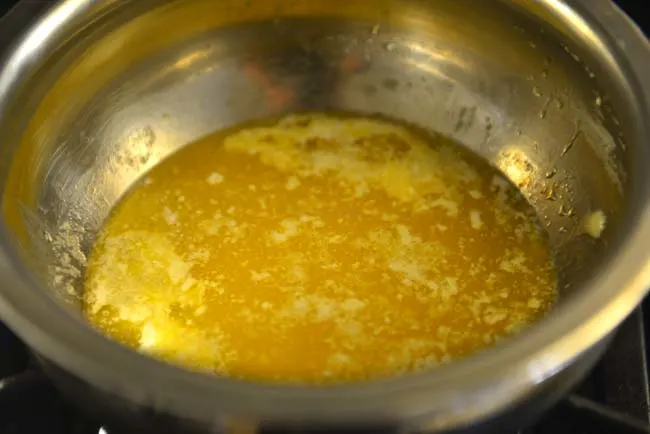
Give a stir every few minutes to dislodge the solids from the sides. This way nothing gets burnt . Once the solids are congealed , frothing stops and you get to see clearer bubbles.
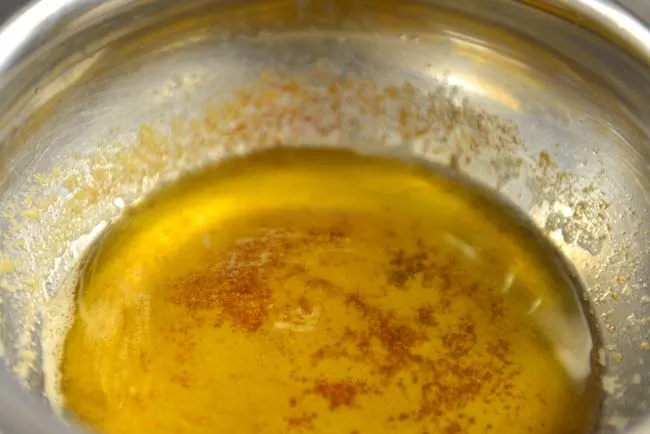
Wait for the bubbling to reduce (keep the heat low) and once the surface seems to clear turn off the heat ! There is plenty of residual heat in the ghee , so if you suspect that you have past the golden yellow point (the solids are dark brown almost to the point of being bunt ) immediately strain into waiting container.
Now if you like t he burnt flavors , More caramel like , nutty flavors , by all means go ahead and set it aside . The ghee will not be golden anymore , but I know a few who would prefer it that way.
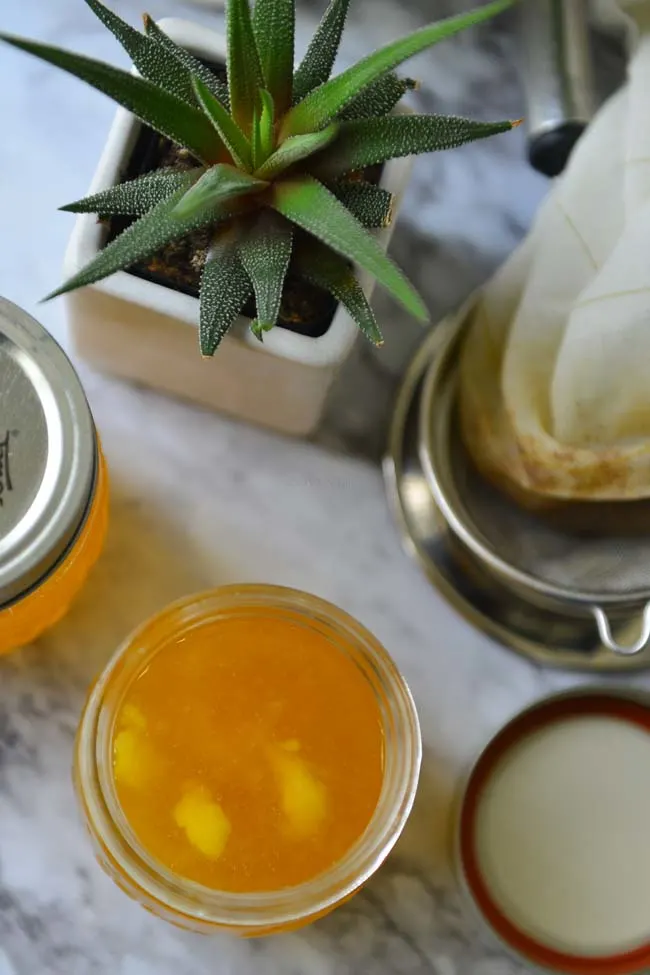
Ghee is best made on stove top . You could use the the slow cooker or instant pot but I would stay away from microwave. Melting so much butter in the microwave for the desired results invariably causes splatter and hot spots. All the time saving that one aims for will be lost to cleaning. When melting butter in the slow cooker or instant pot be mindful of the residual cooking time of the appliance .
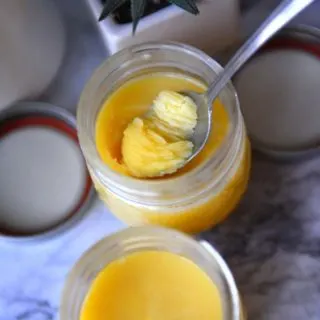
How To Make Ghee
Ingredients
- 1 lb Butter , preferably organic , grass-fed , cultured
Equipment Needed
- Thick bottomed pan at least 3 inches deep
- Wooden spoon / Spatula
- Mesh strainer (optional but good to have )
- Cheesecloth muslin or similar to strain
- Glass Jar/s to store ghee
Instructions
- Place the butter in the skillet over medium-low heat and watch it melt slowly. Depending on the water content of butter it may splatter a little (the deep pot helps in containing the splatters).
- Let the melted butter simmer over low to medium low heat for about 15 to 20 minutes. Stir every few minutes to prevent the solids from s ticking to the sides. Skim off the foam if excessive. Otherwise continue to simmer, stirring occasionally. As it cooks the bits of solids begin to congeal and settle on the bottom of the pan.
- Slowly the white foam on top gets replaced by clear bubbles and the solids in the bottom turns golden brown. Keep the heat on low a t this point as it can easily overheat and burn. As soon as the liquid is clear and the milk fats at the bottom is light brown, take off the heat.
- Let it cool a little before straining into the containers. The residual heat in the ghee will keep the solids cooking after it is taken off the heat.
- Strain using several layers of chees cloth set on a mesh strainer or using a muslin cloth.
Notes
- The more butter is used to make ghee the longer the cooking time is .
- Use only clean dry spoons to scoop ghee. Moisture will interfere with its shelf life.
- From 1 lb of butter you get about 1 C ghee.
- Use a wide bottomed pan so that the spoon can reach all sides to dislodge the milk solids stuck to the sides.
- Use a deep pan so the splatters and foam are contained.
Important: Nutrition Values are estimates. Actuals vary based on ingredients and serving size.
